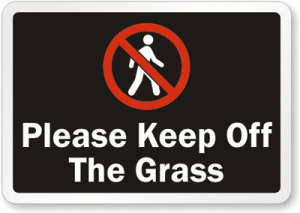 Andrés Duany takes issue in Architectural Record with Michael Sorkin’s review of Landscape Urbanism and Its Discontents. But the problem with a compilation of 20 essays by many different authors is that it rarely presents a coherent argument, so almost anything you say about such a book is (sort of) true. Although this is a sanctioned new urbanist collection, the contributors present a variety of–sometimes contradictory–views. Some admire the High Line, some don’t; some are still fighting a rear-guard action against the modern movement, some aren’t; some see landscape urbanism as the enemy, some don’t. Doug Kelbaugh and Dan Solomon take the sensible position that there is room enough for everyone; Jim Kunstler, spirited as usual, calls landscape urbanism a “lame defense of the bankrupt old mandarin ideology,” which is almost as good as Leon Krier’s blurb: “old modernist wine presented in new greenwashed bottles.” Michael Dennis makes a more telling criticism. “I have not seen, or heard of, any urbanism from so-called Landscape Urbanists . . . I have seen some (occasionally) good urban landscape designs, but mostly they are on the edge of urban contexts–waterfronts, etc.” Duany, who is co-editor of this collection, also makes a valid point that Sorkin does not address. All those swales, water gardens, and native plantings, that are a staple of landscape urbanism–and “green” landscapes in general–are invariably off limits to the public, which is forbidden to walk on them. This is in sharp contrast to the Olmstedian tradition, where absolutely no part of a park is inaccessible. That is the great weakness of landscape urbanism; so much of it seems designed to be photographed rather than used.
Andrés Duany takes issue in Architectural Record with Michael Sorkin’s review of Landscape Urbanism and Its Discontents. But the problem with a compilation of 20 essays by many different authors is that it rarely presents a coherent argument, so almost anything you say about such a book is (sort of) true. Although this is a sanctioned new urbanist collection, the contributors present a variety of–sometimes contradictory–views. Some admire the High Line, some don’t; some are still fighting a rear-guard action against the modern movement, some aren’t; some see landscape urbanism as the enemy, some don’t. Doug Kelbaugh and Dan Solomon take the sensible position that there is room enough for everyone; Jim Kunstler, spirited as usual, calls landscape urbanism a “lame defense of the bankrupt old mandarin ideology,” which is almost as good as Leon Krier’s blurb: “old modernist wine presented in new greenwashed bottles.” Michael Dennis makes a more telling criticism. “I have not seen, or heard of, any urbanism from so-called Landscape Urbanists . . . I have seen some (occasionally) good urban landscape designs, but mostly they are on the edge of urban contexts–waterfronts, etc.” Duany, who is co-editor of this collection, also makes a valid point that Sorkin does not address. All those swales, water gardens, and native plantings, that are a staple of landscape urbanism–and “green” landscapes in general–are invariably off limits to the public, which is forbidden to walk on them. This is in sharp contrast to the Olmstedian tradition, where absolutely no part of a park is inaccessible. That is the great weakness of landscape urbanism; so much of it seems designed to be photographed rather than used.
On Culture and Architecture

The problem for me is that whenever I encounter LU/EU’s [Landscape urbanism/Ecological urbanism] flagship projects it’s actually very hard to find ecology and hydrology in there. The LU/EU designers seem to enjoy talking about the words ecology and hydrology about which they have no idea. Maybe it’s too harsh to say no idea because the students do have opportunities to take a couple of classes and are recommended to thoroughly examine the reading list, but it is understandably more than hard for a fine-art-background student to digest the math, biology and hydrology not even GIS or Remote Sensing within a semester with no intensive training or lab experience in those scientific/planning disciplines. They then only remember what “must be”, “may be” or “should be” rather than what “is”. I mean I’ve never heard of any “DATA” to support and verify the eco/hydrological effectiveness of their design. Everyone today mentions LU during design competitions simply because it sounds actually correct and ambitious and more greenish (nothing wrong with green!), but when the party ends no one remembers what was said. Where are all the professional consultants gone to? Why nobody shows how much rainwater has been stored by the swale or how much urban heat island has been mitigated? What attracts us to the High Line is not the come-back butterflies or native species, but luxury pavers and exotic gardening imported from Europe. We “hoped” so badly the emergence of eco-hydrologically sustainable paradise in the photoshop rendering, so that we put coyotes, owls and even some endangered species reviving or resurrected. Why are all the stupid stubborn creatures not coming to greet us? It’s a frustrating mystery.
Mic’s criticisms are valid. The re-emergence of landscape ecology in the practice of Landscape Architecture is well overdue and requires more attention by practitioners and educators alike. An excellent reference is Principles of Ecological Landscape Design by Beck. However, this endeavor goes well beyond the confines of a four-year degree and requires the continual interest, attention, continued education, and practice of any truly committed landscape architect. It is also a multidisciplinary effort that must include engineers, hydrologists, ecologists, architects, the clients, the public, and other stakeholders; to work, landscape ecology, must involve all stakeholders. It is well and good for a landscape architect to design their portion of the project to be “green” (cringe) but if the other parts of the design team and the contractors don’t buy into the process or understand it, then it’s all for not. Public buy-in is also critical and often fails if one’s project is deemed a “weed-filled, mosquito-infested ditch”. Onward into the fog!